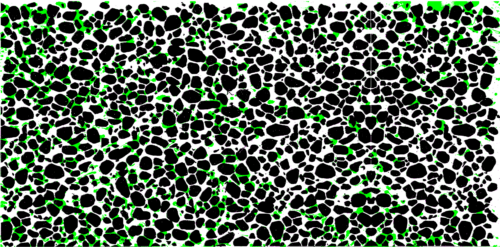From one of the longest free-flowing rivers in the contiguous U.S. to the largest tributary of the Columbia River, Idaho’s rivers are not only breathtaking natural wonders, but also critical components of the state’s environment, economy and recreational opportunities.
Agriculture, tourism and commerce all rely on Idaho’s diverse range of rivers, but what happens when pollutants from these industries threaten these aquatic ecosystems?
Civil Engineering assistant professor Kevin Roche’s environmental research in the Boise State College of Engineering made headlines after being one of 32 projects to be awarded a substantial grant from the Environmental Molecular Sciences Laboratory, a Department of Energy facility. The funding, provided under the Large-Scale Research project initiative, will help scientists and land managers understand how what’s happening at small scales in rivers can have large impacts on water quality and the global climate.
“The laboratory resources provided in this funding will help us develop state-of-the-art methods for quantifying greenhouse gas generation in river sediments,” Roche said. “Water quality in many Idaho rivers and aquifers is impaired by high concentrations of nitrate that accumulate from fertilizer runoff and leakage from septic systems.”
The Environmental Molecular Sciences Laboratory, located at the Pacific Northwest National Laboratory, is renowned for its commitment to advancing scientific knowledge in environmental and molecular sciences. The project funding represents an investment in research that promises to have a transformative impact on the understanding of the environment and challenges it faces.
The significance of river sediment research
Sediment plays a crucial role in the health of rivers, lakes and oceans. But the rapid urbanization and industrialization of many regions has resulted in pollution of aquatic environments.
Shallow groundwater environments typically occur within three feet of land’s surface. These areas tend to carry a host of pollutants including heavy metals, organic contaminants and excess nutrients, all of which have detrimental effects on aquatic life and human health. Roche’s research focuses on better understanding how these pollutants naturally degrade as water flows through the riverbed, a region nicknamed “the river’s liver” because of how effectively it can degrade contaminants like excess nitrate.

However, under certain circumstances nitrate degradation can cause bacteria to release the potent greenhouse gas nitrous oxide. This degradation then shifts the problem of environmental pollution from rivers to the atmosphere.
To understand when, and to what extent, bacteria will transform nitrate into nitrous oxide, researchers must better understand how the growing bacteria alter water’s flow through the riverbed and how the altered flow patterns influence the chemical environment that determines bacterial function.
“Deciphering these interactions will help scientists better understand where and when contaminants such as nitrate react in groundwater, so that we can better predict how much they will degrade and to what extent they will be transformed into other harmful compounds such as nitrous oxide,” Roche said.
Implications for environmental conservation
With a previous Environmental Molecular Sciences Laboratory-funded grant, Roche developed methods for monitoring the interactions between bacterial growth and fluid flow in experimental models of river sediments. This new funding allows for the coupling of those observations with direct measurements of nitrous oxide gasses. The work aims to not only advance knowledge in the field, but to also make tangible contributions to the environmental challenges of the 21st century through the conservation of precious water resources.
Roche’s work is supported by and co-investigators Jasquelin Peña and Verónica Morales from the University of California, Davis, as well as Arunima Bhattacharjee and Karl Weitz at the Pacific Northwest National Laboratory.
-by Jamie Fink
Featured Faculty
-

Kevin Roche, Ph.D.
Assistant Professor